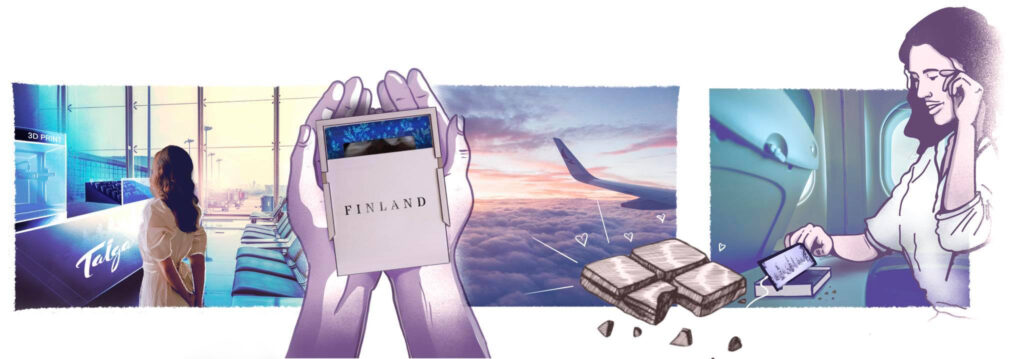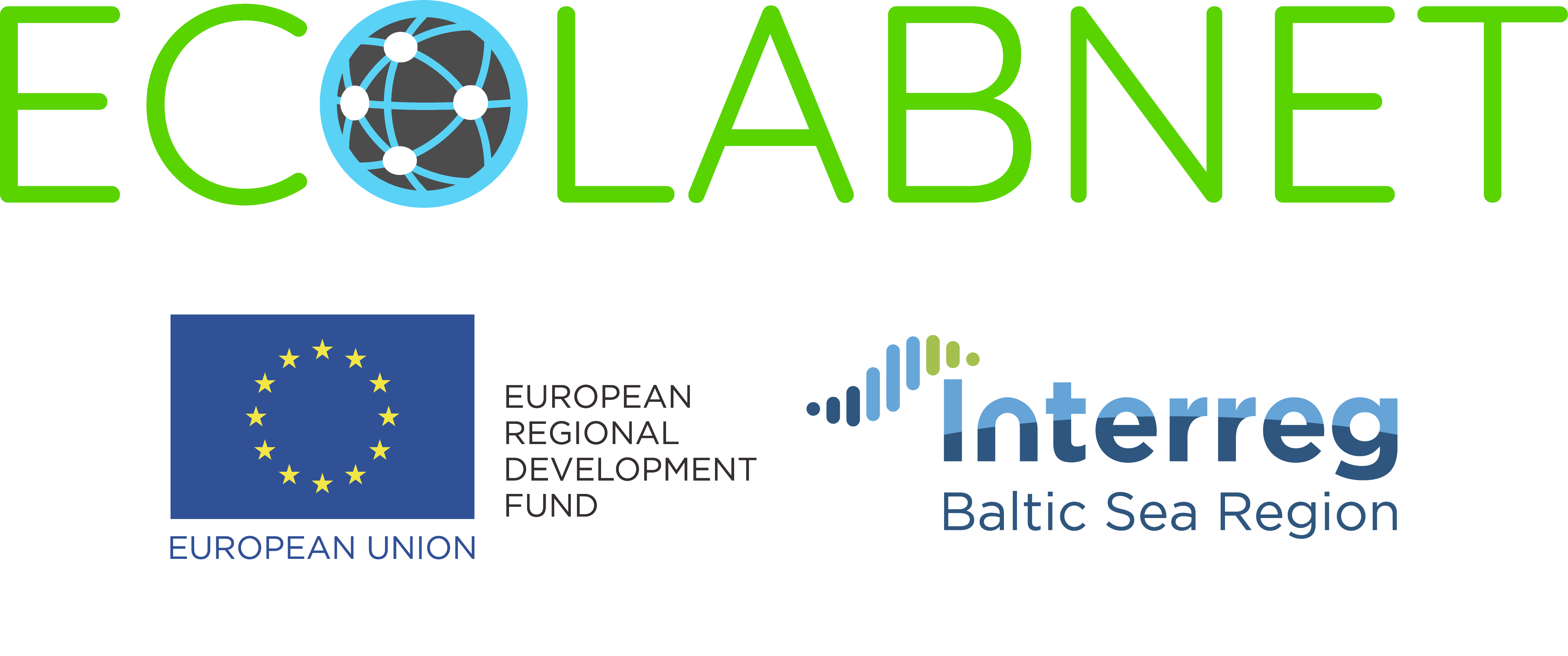
Writer: Miia Lammi, Vaasa University of Applied Sciences, Design Centre MUOVA
Concept image: Veera Hautala, Vaasa University of Applied Sciences, Design Centre MUOVA
“You arrive at the airport after an amazing vacation. You were enjoying experiences so much that you did not buy enough souvenirs, especially for your close ones. Fortunately, you can also shop at the airport. Around the corner are Finnish delicacies in a box made from Finnish ingredients. Wood-based packaging smells wonderfully of the forest and other bio-based packaging smells like strawberry and sea.
The counter has a stylish 3D printer that you can use to modify a gourmet box to tell a story about the trip, you and recipient of the gift. Initials on the box makes it a personal package for the recipient. I <3 FIN / Vaasa / Lapland tells about the origin of the gift and the forest or sea view from your own experience. You can choose from the ready-made options or add your own message. Maybe you could make your own pattern with an easy-to-use 3D design program.
After you have designed your own chocolate box you can follow a skillful implementation of 3D printer. You take a chair and a drink while watching the print emerge. Your interactive chair allows you to go back in your memories about your holiday destinations. You adjust the virtual walls around your chair and dive into a maritime experience one more time. Layer by layer you will see the tailored box building up while your drink epties – so efficient and skilled.
Your chair will let you know when your gift is ready. You have a brand-new package in your hands which is hiding chocolate from Finland and is wrapped around your sea experience. You had one last experience before the plane takes off towards the home and close ones.”
From idea to practice
3D printing enables manufacturing close to the consumer as well as interesting shapes and personalization. 3D printing of bio-based materials reduces material waste and improves the environmental friendliness of the product. However, 3D printing as a manufacturing process takes time. To meet this challenge, the Muova team developed various of service solutions for 3D printing. One service concept gave inspiration to the story presented in the beginning of this article.
The story shows that comprehensive service solutions for consumers require collaboration with different actors. A service system for 3D printing need to function smoothly and reliably. When 3D printing is provided as a service, maintenance activities need to function accurately.
3D design software enables people to tailor the product by themselves. Software design needs to consider the service situation as well as the competence level of the users in order to offer user-friendly experience. On the other hand, when buyers can tailor the product, it offers an experience of a modern craftsmanship.
The Ecolabnet project have developed 3D-printed product solutions from bio-based materials. The product solutions illustrate ecological innovations and their development in multidisciplinary cooperation with RDI actors and companies. Service solutions attached to the products can create more value to the service providers and their customers while lowering the environmental impact of the product. Can 3D printing as a service add value to your product?
